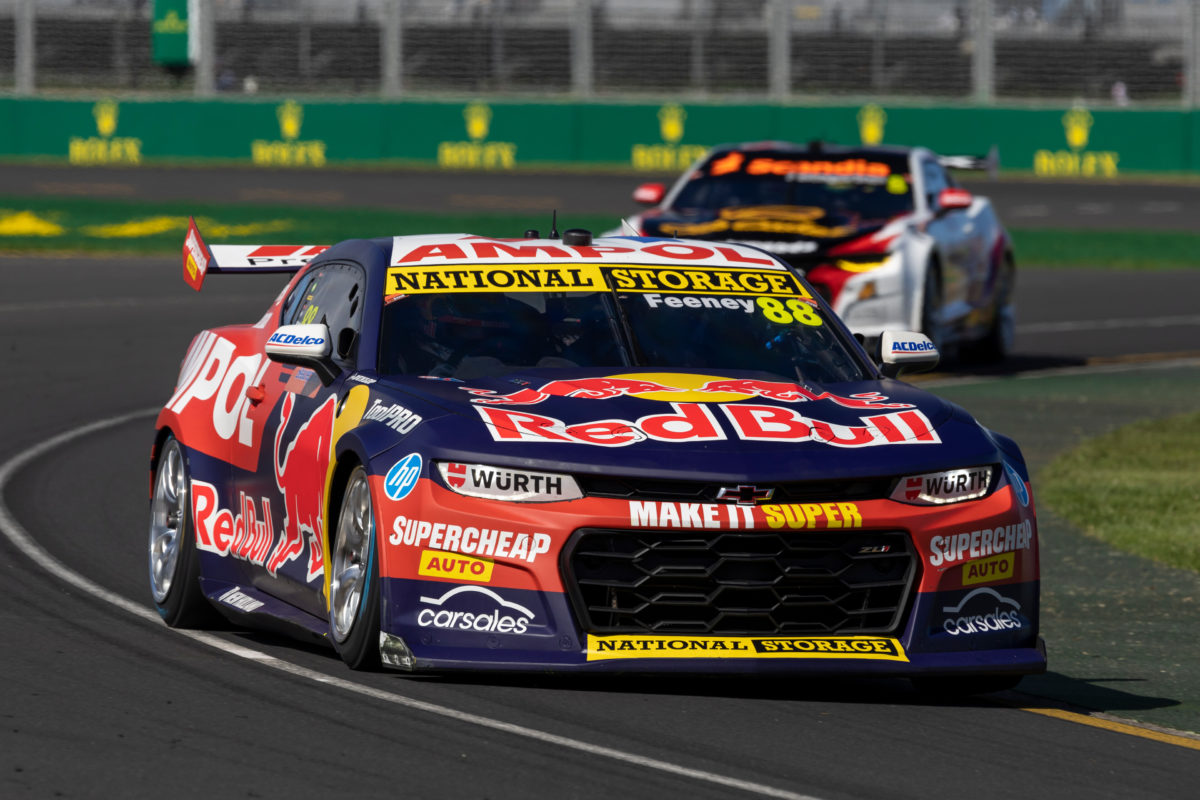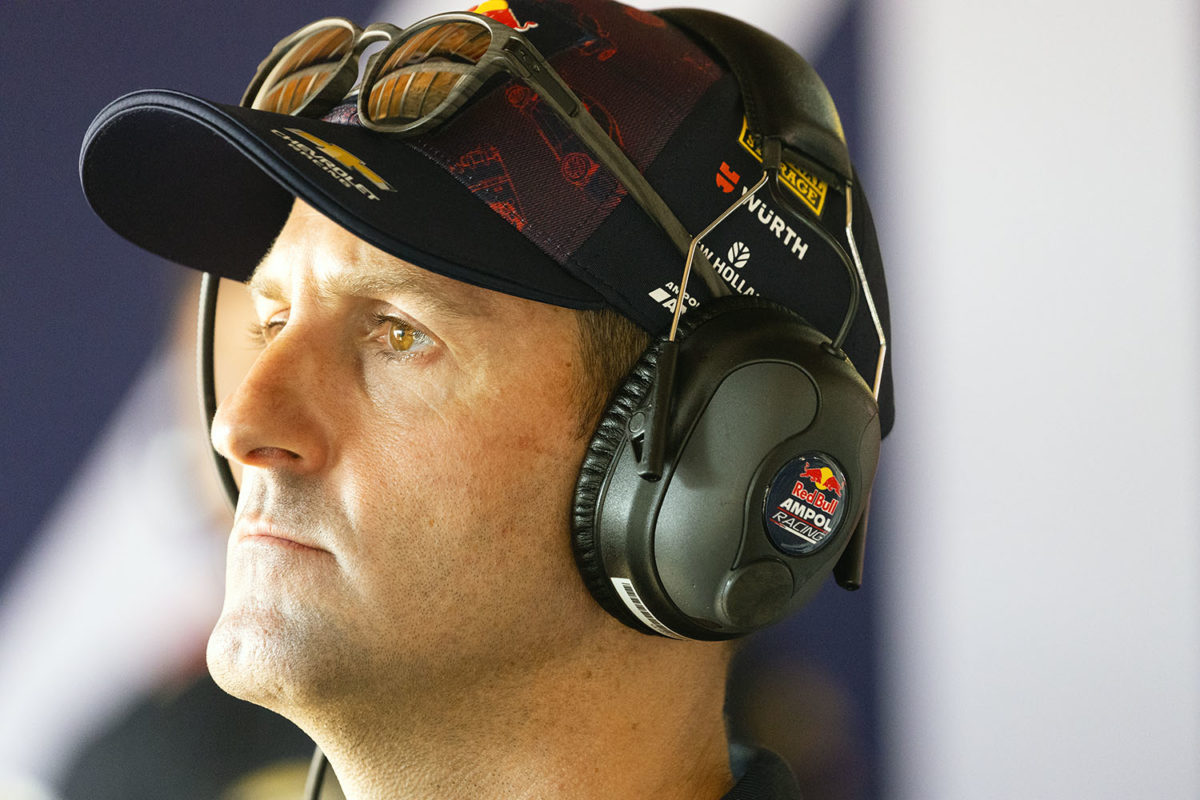

Jamie Whincup is eager to reduce the weight of the Gen3 Supercars, as the Chevrolet teams adjust their centre of gravity (CoG) ahead of the next event of the season.
4.97kg of ballast within the Camaro will have been shifted to a bar behind the fuel cell by the time teams roll out at the Bosch Power Tools Perth SuperSprint next week, following CoG analysis which detected a minor disparity.
While the change brings the Camaro’s CoG up slightly in order to match that of the Ford Mustang, total minimum vehicle weight remains the same, at 1335kg for the first season of the Gen3 era.
Whincup, Team Principal at Triple Eight Race Engineering, which homologates the Chevrolet and has contributed even further to the Gen3 development effort, would like that figure to drop for both Camaro and Mustang.
“I would have much preferred to have lightened the Ford off, if possible,” he told Speedcafe.
“They’ve done a quick fix for the next round – no problems – but I certainly want to look into lightening the Ford off.
“The aim of the car was to be 100kg lighter than the predecessor. When we first rolled out, when we first put our car on the scales, it was over 120kg less, with a few bits missing.
“But then we’ve blown out to only 80kg less than the previous car, which is disappointing.
“I get why we’ve got there – it’s easier to add weight than to take it off – but looking forward to working over the next 12 months to try to get some weight out of the cars to get them back, if we can, down to that 100kg mark.”
Reducing weight enhances performance, but also has multiple other benefits, consistent with the objectives of Gen3.
“[Removing] a hundred kilos, one, make the car performance better, but there’s [also] cost saving,” explained Whincup.
“There’s 20kg less in tyres, brakes, fuel, and the big one in crash damage as well. It’s another 20kg less of inertia going into a tyre wall or a concrete wall.
“I want to keep the cars high-performance, and if we can get the 20kg out, then, fantastic.”
The Camaro needs significant ballast to match the Mustang given the former has a pushrod engine whereas the latter’s is a heftier, double overhead cam unit, and engine CoG analysis saw weight added under its bonnet before racing began in Newcastle.
Whincup is hopeful of changes as soon as this year.

“I think the analysis is good, so how we roll out for Perth will be accurate, so if we can get some weight out of the Ford, and then we can take this added lead off, that’s what I’m proposing, but that takes time,” he said.
“So, hopefully we can chip away in the next six months and get the weight back out of the cars, so we don’t just keep getting fatter, fatter, fatter, and end up with a car the same weight as the previous car.”
One area which will add weight is chassis strengthening initiatives which are officially optional from next week’s Wanneroo event, but expected to be taken up by every team either before or after the trip across the Nullarbor.
According to Whincup, though, the difference is “hundreds of grams”, and will not put CoG analysis out given it is the same for both cars.
There is also no grumbling from his side over the CoG modification, which is the first in-season parity change this year, and follows runway work conducted just a fortnight out from the start of the campaign.
“I don’t think the CoG change was instigated by Ford; I think Supercars would have done that anyway,” he remarked.
“This hasn’t been instigated by the other side; this is just Supercars doing their due diligence.
“They were so close – they almost absolutely nailed it going into Newcastle – but double-checked and just a minor change; two hundredths [of a second] a lap.”
Practice in Perth takes place on Friday, April 28.



















Discussion about this post